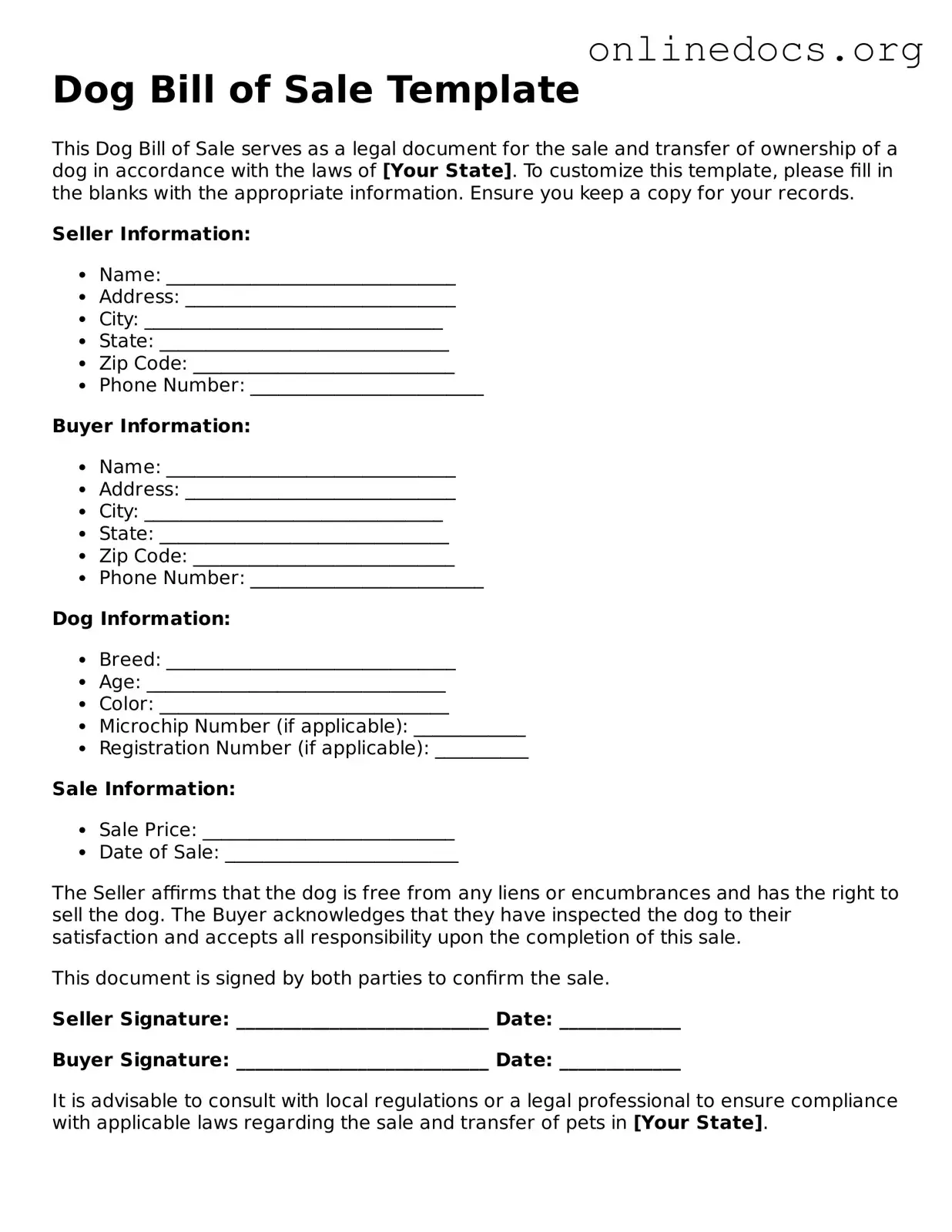The Dog Bill of Sale form is quite similar to a Vehicle Bill of Sale. Both documents serve as proof of ownership transfer. When you sell or buy a car, the Vehicle Bill of Sale outlines the details of the transaction, including the buyer and seller's information, the vehicle's description, and the sale price. Just like the Dog Bill of Sale, it protects both parties by providing a clear record of the sale and the terms agreed upon.
Another document that resembles the Dog Bill of Sale is the Bill of Sale for Personal Property. This form is used for the sale of various items, ranging from furniture to electronics. It includes essential details such as the item description, sale price, and the signatures of both the buyer and seller. Similar to the Dog Bill of Sale, this document helps establish legal ownership and can be useful in case of disputes.
The Lease Agreement is another document that shares similarities with the Dog Bill of Sale. While a Bill of Sale transfers ownership, a Lease Agreement outlines the terms for renting an item, such as an apartment or equipment. Both documents require clear terms and conditions, including duration, payment details, and responsibilities of each party. They ensure that both the lessor and lessee understand their rights and obligations.
The Gift Deed is also comparable to the Dog Bill of Sale, particularly when a dog is given as a gift. A Gift Deed formally transfers ownership without any exchange of money. It includes the donor's and recipient's details, along with a description of the property being gifted. Just like the Dog Bill of Sale, it serves to document the transfer of ownership and can help prevent future misunderstandings.
Similar to the Dog Bill of Sale is the Power of Attorney document. While it may not directly involve a sale, it allows one person to act on behalf of another in legal matters. This can include decisions related to pet care or property management. Both documents require clear identification of the parties involved and outline specific responsibilities, ensuring that actions taken are legally binding.
The Adoption Agreement shares some features with the Dog Bill of Sale, especially when adopting a pet from a shelter or rescue organization. This document outlines the responsibilities of the adopter and may include terms regarding care, training, and spaying/neutering. Just like the Dog Bill of Sale, it formalizes the transfer of responsibility for the animal and ensures that both parties are aware of their obligations.
A Rental Agreement for pets is another document that resembles the Dog Bill of Sale. This agreement outlines the terms under which a pet is temporarily cared for or housed. It specifies the rental period, care responsibilities, and any fees involved. Much like the Dog Bill of Sale, it establishes clear expectations and protects the interests of both the pet owner and the caregiver.
In addition to the various bills of sale already discussed, it is important to consider the Trailer Bill of Sale, which serves a significant role in the transfer of trailer ownership. This form is essential for ensuring that all necessary details are recorded for the transaction, providing both buyer and seller with clear documentation. To find a comprehensive template for this purpose, you can visit legalformspdf.com, where you can access the required resources to facilitate the sale.
Lastly, the Partnership Agreement can be likened to the Dog Bill of Sale when two or more individuals decide to co-own a pet. This document outlines the responsibilities, rights, and financial obligations of each partner regarding the care and upkeep of the pet. Similar to the Dog Bill of Sale, it provides clarity and helps prevent disputes by setting clear expectations from the start.
